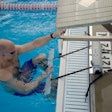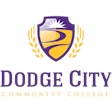
On May 29, 1985, what should have been an exciting European Cup Final between Liverpool and Juventus at Belgium’s Heysel Stadium instead became one of soccer’s darkest days. An hour before kickoff, Liverpool supporters reached a thin police cordon and charged toward Juventus fans. As panic spread, people were crushed against a concrete retaining wall that eventually collapsed. The tragedy claimed 39 lives and injured over 600 spectators. Fourteen Liverpool fans were found guilty of manslaughter and sentenced to six years in prison.
An investigation into the Heysel disaster revealed multiple crowd management failures, including inadequate stadium design, crumbling infrastructure, insufficient security personnel, poor crowd segregation and the absence of comprehensive emergency response protocols. This catastrophic event led to a five-year ban on English clubs from European competitions and eventually sparked the modernization of stadium safety standards across Europe.
Four years after Heysel, in April 1989, another tragedy reinforced the importance of proper crowd management when 96 Liverpool fans were crushed at Hillsborough Stadium during an FA Cup semifinal. The disaster resulted from police mismanagement of crowd flow, with too many supporters directed into already overcrowded standing-only pens.
The Hillsborough disaster fundamentally transformed stadium safety in the UK, leading to the Taylor Report, which mandated “all seater” stadiums for top-tier professional soccer and dramatically improved crowd management protocols.
These tragedies stand as stark reminders that understanding crowd dynamics isn’t merely academic — it’s a matter of life and death in sporting venues. Nearly four decades later, the science of crowd management has evolved significantly, providing evidence-based approaches to prevent such disasters. Here’s a look at the science behind crowd dynamics, and how understanding them has led to a revolution in stadium safety and security.
The science of crowd dynamics
Crowd dynamics encompasses the study of how groups move, interact and respond to environmental changes within confined spaces. The field combines elements of physics, psychology and sociology to identify predictable patterns in crowd behavior.
According to the National Center for Spectator Sports Safety and Security, crowds behave as complex adaptive systems with emergent properties that cannot be predicted by examining individual behaviors alone. When density reaches critical thresholds, crowds begin to move like water, transferring forces between individuals and creating potentially dangerous pressure waves. Understanding these dynamics allows venue managers to design spaces and procedures that prevent dangerous conditions from developing.
Gary Gardner, president and CEO of TOTALeACCESS and an NCS4 board member, says that lessons learned from incidents like the ones at Heysel and Hillsborough have helped venue operators better understand the complex nature of crowd behavior. “These types of incidents have certainly heightened awareness of the risks associated with the failure to mitigate crowd issues through planning,” Gardner says. “It’s also led to the use of tools to anticipate these types of incidents, such as simulation to predict potential issues, and staff training to recognize and take corrective action to prevent problems.”
Technological advancements
The evolution of technology has revolutionized how venue operators monitor and manage crowds. Gardner emphasizes that real-time monitoring has become one of the most critical tools available. “Probably the most important is real-time video monitoring, allowing operations to read the crowds,” he explains. “Preplanning using digital twin simulation allows you to anticipate potential problem areas.”
NCS4 recommends several technological approaches to enhance crowd safety. These include foot traffic sensors at key entry points, mobile app heat-mapping to visualize crowd distribution and elevated camera systems for overhead situational awareness. Integrated dashboard systems displaying multiple data streams to security personnel have also proven valuable, alongside predictive analytics that forecast potential pressure points based on historical data. In unique environments, such as stadium concert mosh pits, Gardner notes that pressure-sensitive pads along the front of the stage offer warning alerts to safety professionals.
Risk assessment and venue design
According to NCS4 recommendations, effective crowd management begins with thorough risk assessment. This includes detailed analysis of venue layout to identify potential bottlenecks, understanding expected attendance figures, consideration of audience demographics to include institutional rivals and evaluation of previous incidents at similar events.
Venue architecture significantly impacts crowd flow. NCS4 recommends that well-designed facilities incorporate multiple entry and exit points strategically positioned to distribute traffic, clear sightlines for both spectators and security personnel, sufficient corridor width to accommodate expected volume and elimination of bottlenecks that could trap patrons.
Despite improvements, Gardner notes persistent design challenges in modern venues. “Portable concessions in the concourse create bottlenecks,” he says. “Not enough female restrooms, particularly for concerts. In mosh pits, there are often no built-in pressure release areas to let things expand.”
Training and communication
Proper staff training is the foundation of effective crowd management. “First, you have to plan for the space you have, considering the capacity and density for individuals,” says Gardner. “The most accurate way is simulation. Then train your plan. Also, pushing the outer perimeter farther out is effective in creating more control space.”
NCS4 also recommends specialized training in crowd psychology and behavioral dynamics, data-driven staff positioning with higher concentrations at known pressure points, and comprehensive knowledge of venue layout and emergency routes. Staff should be able to recognize early warning signs of dangerous crowd conditions before they escalate to critical levels.
Lastly, communication can never be underestimated, as it serves as the backbone of crowd management systems, including pre-event messaging about procedures, clear wayfinding signage and reliable public address systems.
Cross-functional planning
NCS4 identifies crowd management as more than just a security function. Effective planning requires collaboration between security departments, facility operations and guest services personnel, medical teams, law enforcement officials and event production staff. This cross-functional approach ensures all aspects of crowd management are addressed comprehensively.
“This is very important for preplanning with all teams and practicing your response,” Gardner emphasizes. “Teams respond and act the way they train.”
When implementing best practices, planners should focus on density management as the most critical aspect of preventing dangerous conditions. This includes establishing maximum capacity limits for specific sections, using barriers and flow systems to prevent overcrowding, and monitoring real-time density levels with prepared intervention protocols.
A progressive approach to crowd control allows for nimble responses to changing conditions. This includes such strategies as temporarily closing specific entrances to redirect flow, adjusting barrier configurations based on real-time conditions and implementing “holding areas” to meter entry during peak arrival times.
The legacy of tragedy
The tragic lessons of Heysel, Hillsborough and other stadium disasters have driven significant improvements in our understanding of crowd dynamics and venue safety. The comprehensive recommendations established by NCS4 provide a framework for venue managers to implement systems that prevent dangerous conditions from developing.
By investing in proper planning, training, technology and communication systems, sports venues can create environments in which thousands can gather safely on gameday. For sports venue managers, understanding and applying the science of crowd dynamics isn’t optional, but rather an essential part of fulfilling their duty of care to patrons, staff and athletes alike.





































